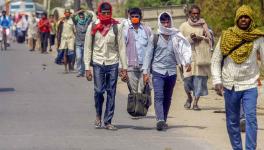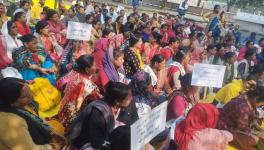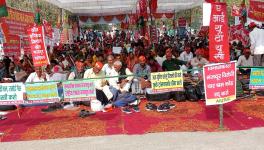Vaccine Strategies and Uncertainties: What is India’s Way Forward
India announced to inoculate its 18 plus population from May 1 amidst uncertainty regarding the availability of vaccines to the states and private providers. Even as the country battles the ferocious second wave, the Union government liberalised the vaccination policy, allowing states and the private sector to procure 50% of total vaccines produced directly from the manufacturers at different prices whereas the Centre will receive the rest 50% at a lower rate than charged to the states and private providers.
Essentially, the fiscal responsibility for vaccinating 356 million people above 45 years of age lies with the Union government whereas states together ought to bear the burden of immunising 576 million people in the age bracket of 18 to 44. While Indian states are at different levels of GDP growth and revenue mobilisation capacity for health, this move may disproportionately affect the fiscal situation of states.
Currently, 254 million people constituting 2.7% of the eligible 18+ population have been fully vaccinated, which is noticeably lower compared to the United States of America, Brazil, Germany and France. As on date, around 62% population in Israel, 50% in UK and 43% in USA have been vaccinated with at least one dose of vaccine against just 9% in India. A large share of the population should be immune to the virus and the safest way to achieve that is through vaccines.
Within India, the eligible (18+) population for vaccination varies widely within a range of 74-76% in Gujarat, Kerala, Maharashtra, and Delhi, 55% in Bihar and 62% in Uttar Pradesh. Two distinct facts are evident from the vaccination data -- around 15-24% of the total eligible 18+ population in Gujarat, Maharashtra, Kerala, Chhattisgarh and Delhi, where the virus has been virulent for some more time, has received both single and double doses, contrary to 7-11% in Assam, Bihar, Uttar Pradesh, Tamil Nadu and West Bengal where the virus spread hastily after the election got over in some of these states. Overall, 68.56% of the country’s total population (1371 million people) are eligible whereas only 13% of them has been injected either single or double doses of the vaccine. A gargantuan task is ahead and the way the vaccination strategy unfolded is quite perplexing.
Vaccine Quota for States
Most of the states have already been experiencing shortage of vaccines for those above 45 years. On the top of that, there is a long waiting period for supply of vaccines for the 18 to 44 age group except a few states that rolled out at a low scale on May 1. States are placing orders without any defined strategy for distribution of the 50% of vaccine supply among themselves. Uncertainty looms around actual delivery of vaccines. This has led to insalubrious competition among the states and everyone is tempted to use tactics to obtain the supply first. Though Bharat Biotech and Serum Institute, the two vaccine manufacturers, have announced prices, it may not ensure fair distribution of vaccines across states unless a quota for each state is defined based upon fixed objective criteria.
In order to clear the mess and ensure smooth supply of vaccines to states, we may objectively decide how much a state should obtain based on its eligible 18+ population and share of state- specific total number of infected persons.
Suppose, we assign 100% weightage to infected persons with the share of 18+ population as the primary variable for vaccine distribution across states. As per this exercise, even if the share of eligible population is more than the share of infected persons, the state quota is more where the share of infected persons is higher. For instance, Maharashtra gets 16% of vaccine produced and Uttar Pradesh gets 8 % even if the share of eligible population in Uttar Pradesh is higher than Maharashtra. Accordingly, the lower infected states get lower doses, and furthermore, this is a dynamic process and state quota changes based upon the changing share of infected persons on a regular basis. This may assuage the chaos in the distribution and in the absence of any objective criteria, wherein every state wants to jump the queue.
Differential Pricing
Further, the differential pricing strategy for Union and state governments for the vaccine, which is a global public good, is disconcerting at this critical moment. The reliance on market mechanisms to correct the chaos is not a viable alternative as the market will certainly fail to operate efficiently and distribute this public good for benefiting masses. There will be distortions in supply either due to deployment of wrong tactics by users or inappropriate pricing strategy by suppliers.
Bharat Biotech and Serum institute have announced differential prices for the state governments and private players. The price per dose of Covishield for the state governments is INR 300 against INR 600 for private providers; similarly, Covaxin costs INR 400 to state government and INR 1200 for the private providers. On the contrary, they will supply vaccines at INR 150 per dose to the Union government for vaccination of the 45+ population.
In a federal structure, Union and state governments should not have varied price structures for a product reckoned necessary to combat the infection. Preferably, the procurement should have been done centrally for the entire population with a price a little more than Rs 150 per dose, which would allow the manufacturers to operate efficiently. To alleviate the financial burden of the Union government, resources for vaccinating the 18 to 44 population could have been shared between the Centre and the state in 60: 40 ratio like any other central sponsored scheme (CSP).
For a comprehensive vaccine roll out, both the Union and state government should work in unison so that every eligible Indian is vaccinated swiftly. Apart from beefing up domestic production, import of finished vaccines should be allowed in India and this may augment the supply shortly. States are equally responsible in this long and deadly battle and they have to be vigilant for effective delivery of the vaccines to the last mile, minimising waste and efficiently managing the supply chain for covering a large proportion of population.
(Dr Rout works as an additional professor in Indian Institute of Public Health, Bhubaneswar (IIPHB). Views expressed here are personal and do not represent the views of this publication or the organisation where he is currently working. He can be reached at [email protected] .)
Get the latest reports & analysis with people's perspective on Protests, movements & deep analytical videos, discussions of the current affairs in your Telegram app. Subscribe to NewsClick's Telegram channel & get Real-Time updates on stories, as they get published on our website.
























